Create an OpenAI API token
- First we need to create an API key. For that, go to your account profile and click on View API keys
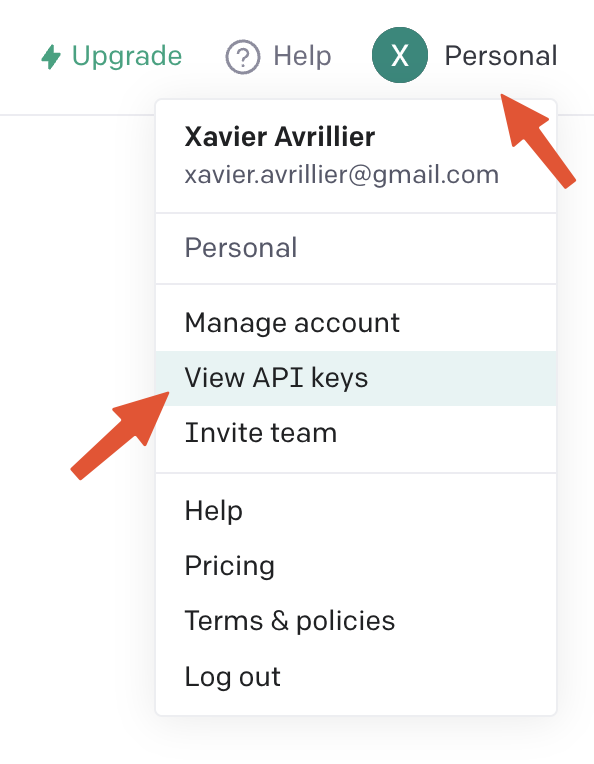
- Then click Create new secret key
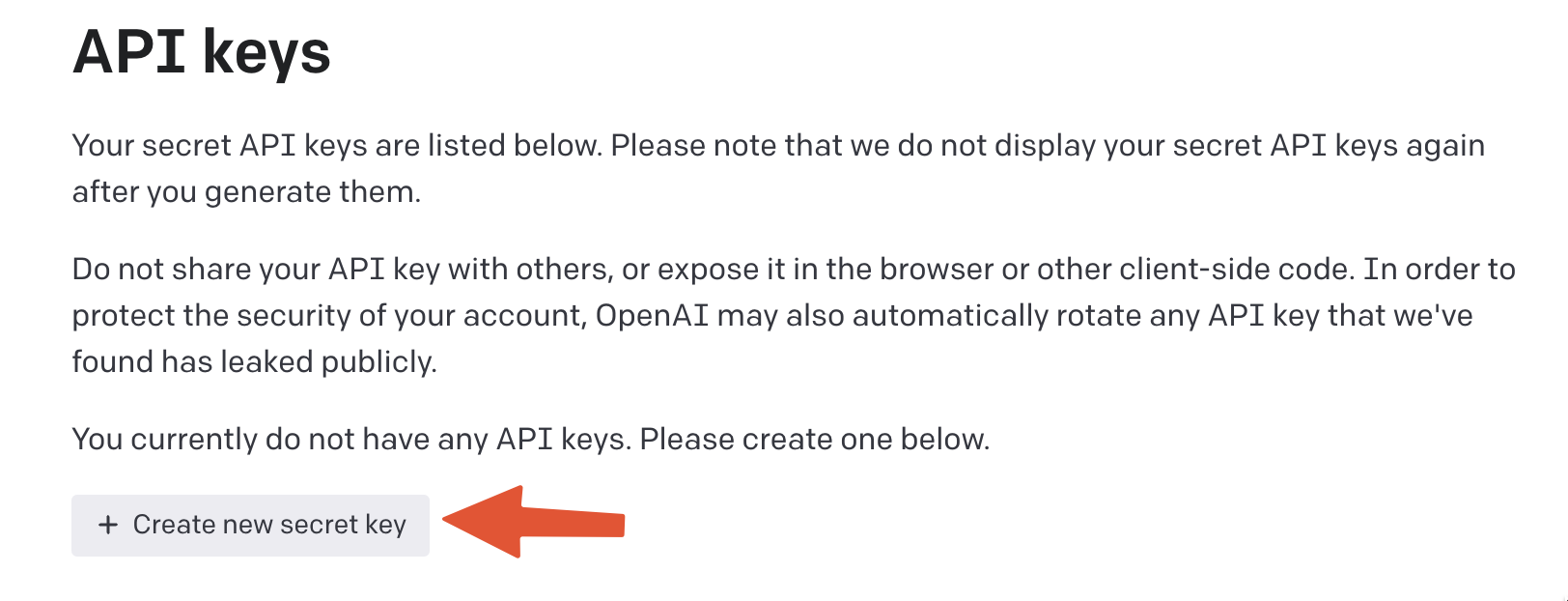
- Copy the key in the clipboard, you won’t be able to display it again. If you close without copying, you’ll have to create a new one.
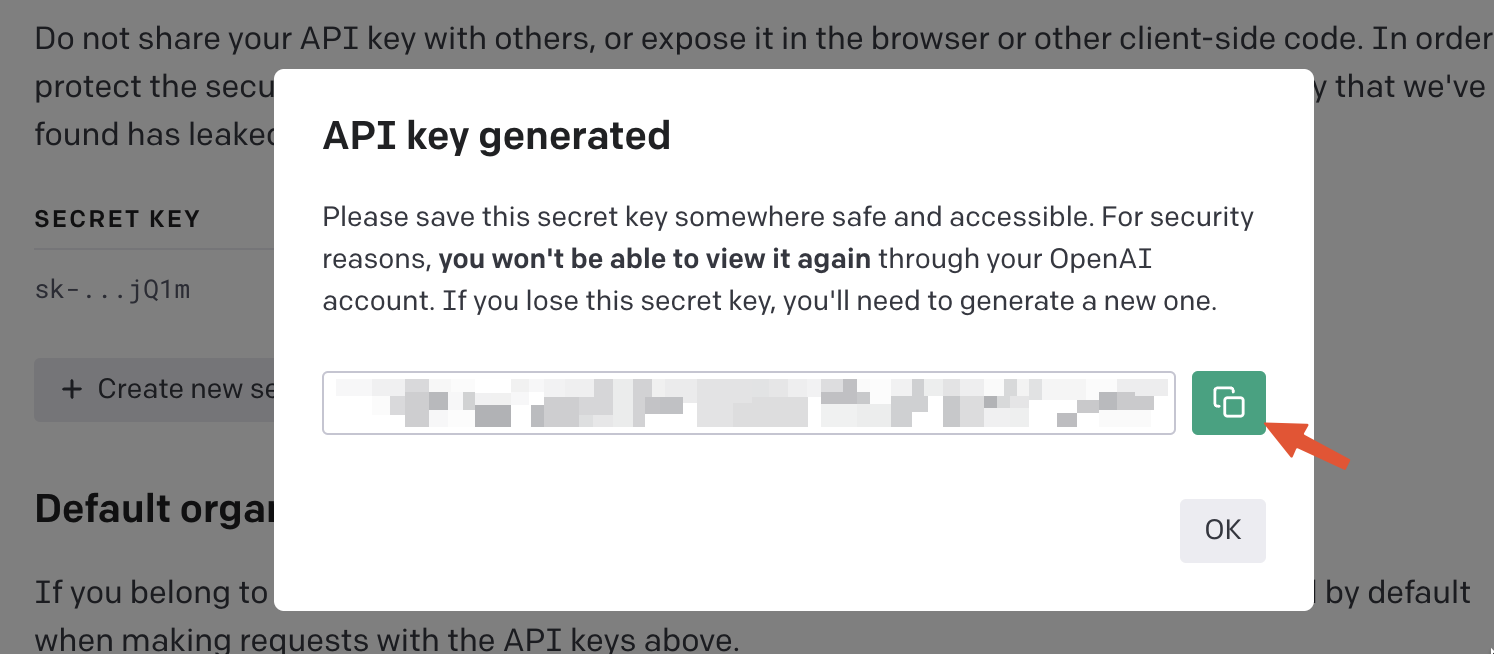
- Now let’s export that key in an environment variable in the Powershell session.
$env:OPENAI_API_KEY = "sk-Wif...BzndkO"
Powershell function for ChatGPT
When starting with this blog idea, I went to the API documentation straight away but… wait a minute! I decided to do a bit of dog fooding and ask ChatGPT to write the function for me and the result was really good! I had to change a couple things here and there but here is the ChatGPT Powershell function.
function Ask-ChatGPT {
param(
$prompt,
$model = "text-curie-001",
$api_key = $env:OPENAI_API_KEY,
$max_tokens
)
# Build the request body
$body = @{
"prompt" = $prompt;
"model" = $model;
}
if ($max_tokens) {$body.add("max_tokens",$max_tokens)}
# Send the request
$response = Invoke-RestMethod -Uri "https://api.openai.com/v1/completions" -Method Post -Headers @{ "Authorization" = "Bearer $api_key";"Content-Type" = "application/json" } -Body (ConvertTo-Json $body)
# Return the response
return $response.choices.text
}
- The
$modelparameter lets you change the OpenAI model to use. Different models will be more or less advanced and expensive regarding to your needs. I set it tocurieby default partly because their doc says it’s very good and partly because I have no idea what I am doing.
Curie can perform many of the same tasks as Davinci, but faster and for 1/10th the cost.

- The
$max_tokensparameter lets you set a maximum number of tokens. A token is essentially a piece of word. Requests are billed based on the number of tokens sent in your prompt plus the number of tokens in the completion returned by the API. The models above are priced based on chunks of 1000 tokens.
You exceeded your current quota, please check your plan and billing details
Before cracking on, I should mention that you may encounter an error saying that you don’t have enough funds, even though every new user is entitled to $18 worth of free usage. I believe this was because ChatGPT was down at this time and the error was just not reprensentative of the situation.
"message": "You exceeded your current quota, please check your plan and billing details.",
"type": "insufficient_quota",
It seems that OpenAI changed the policy and made the API available to paid accounts only. I was able to use the web UI fine but I would get this message when using my API key. I just added a payment method in my account and it worked fine.
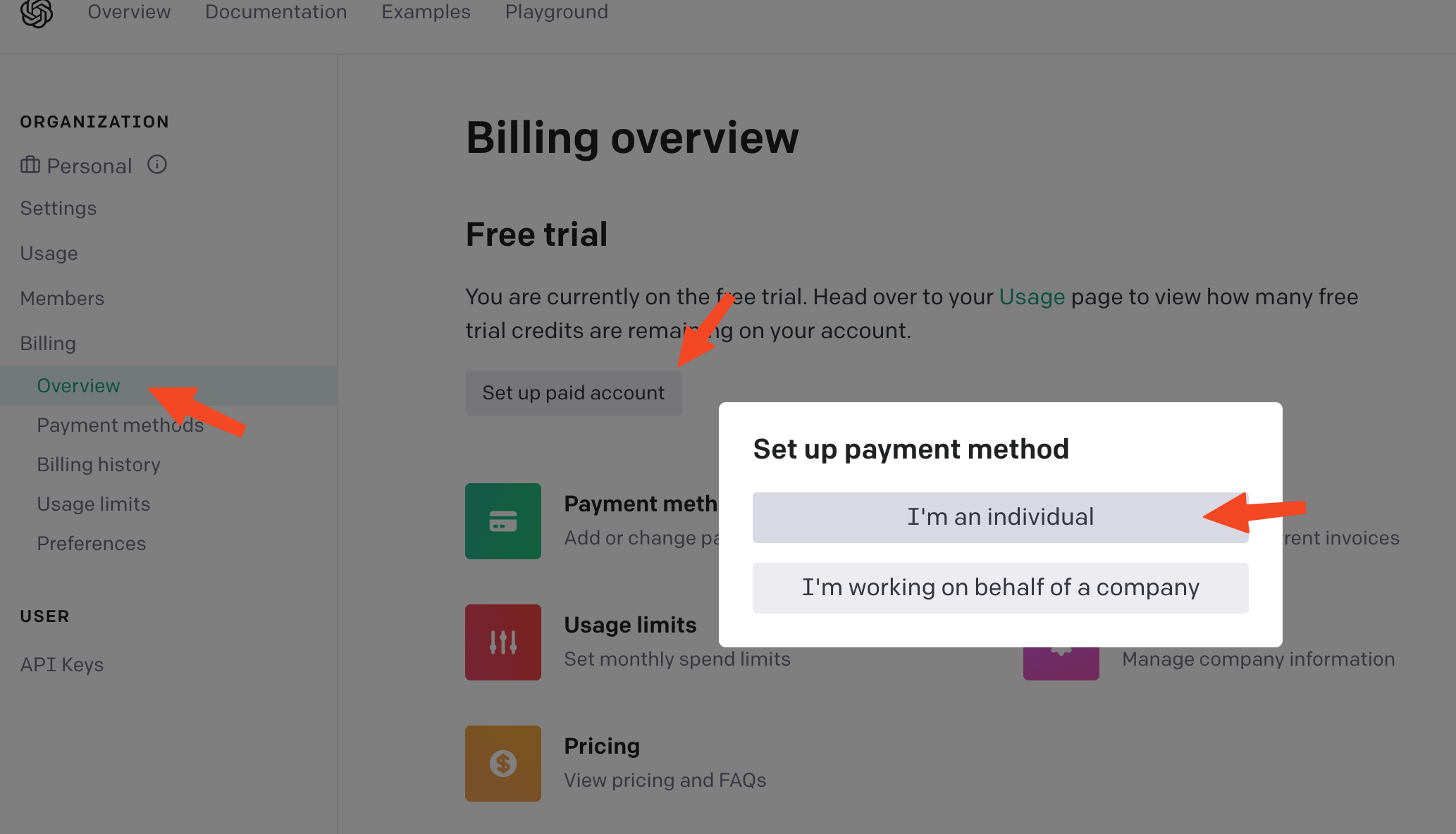
I couldn’t find the $18 trial credit in my account so I just set a spending limit of $5 just to make sure it won’t drain my hard-earned monies.
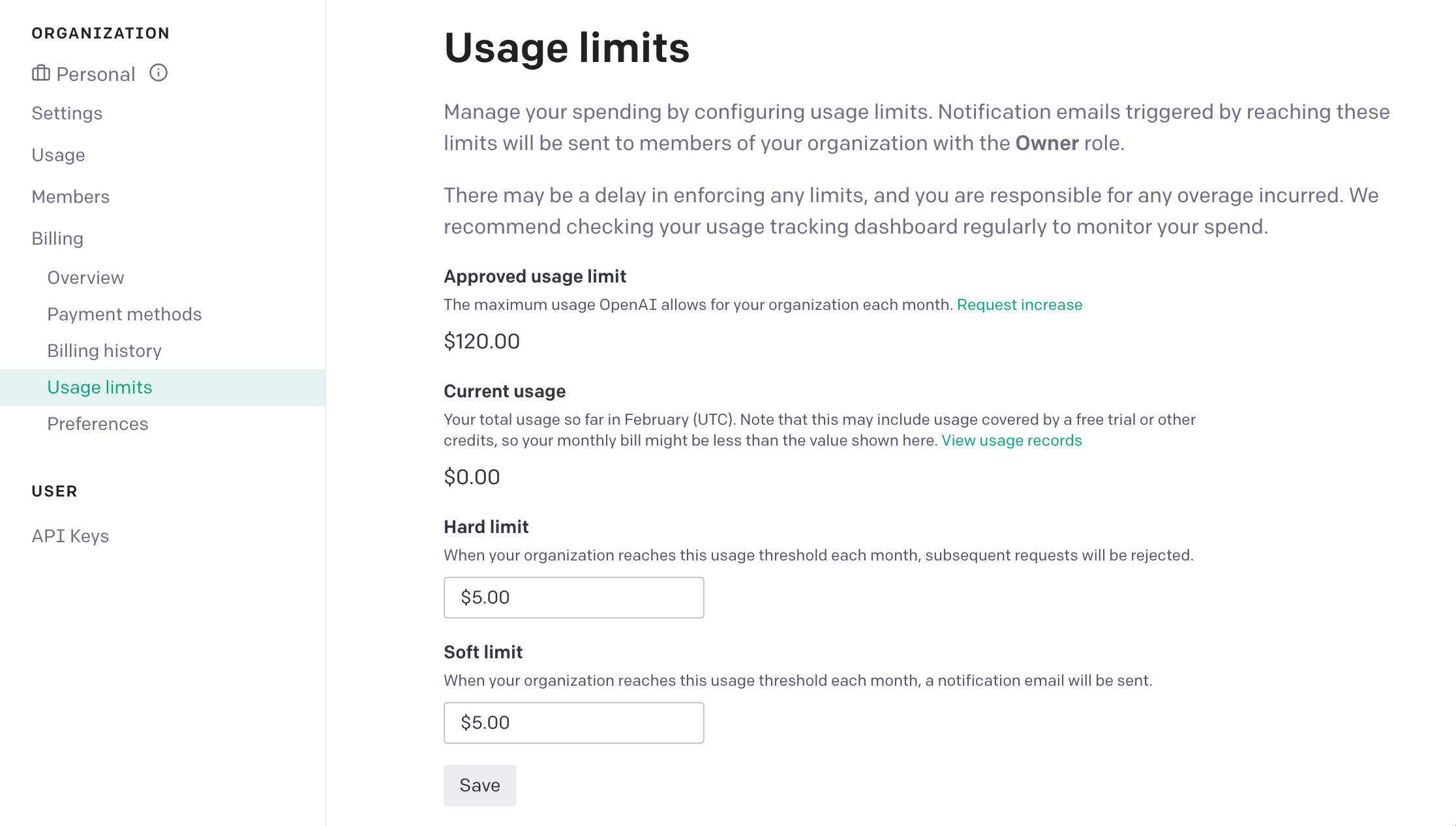
Before you freak out about expecting a big invoice like you heard it happen to folks playing in AWS, note that it remains very cheap if you use it sparingly. As you can see, I only did 15 requests but quite a few of them had lenghthy responses and I have only used $0.01.
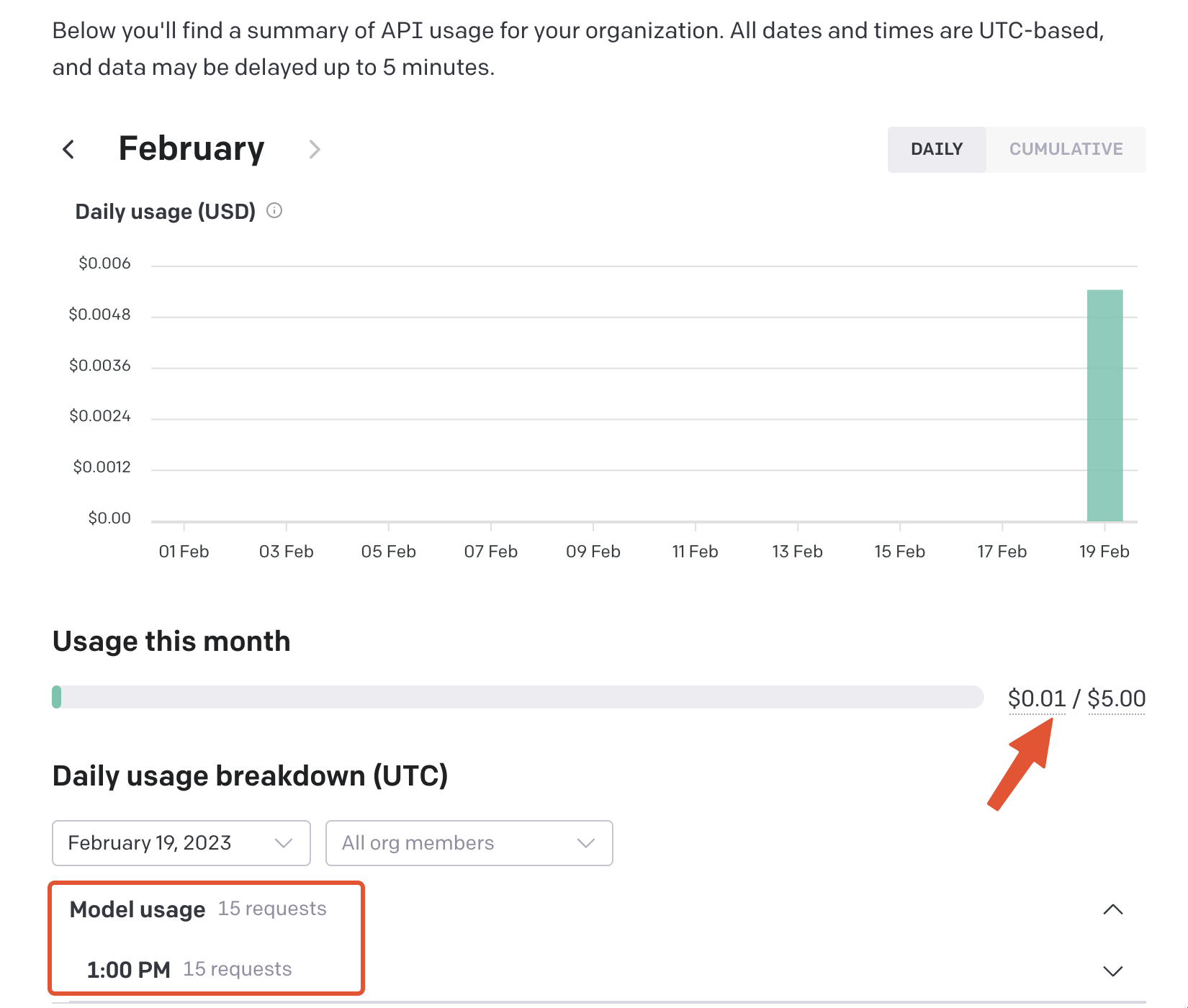
Using ChatGPT in Powershell
Using the function is very simple, just run Ask-ChatGPT with your question. The only extra parameters I added is -model (which we’ll discuss later) and -max_tokens. According to the documentation, the default max_token value is 2048 (max) but I found that the responses were always cropped if I didn’t specify it. As a result, if you find that your queries get cropped, set -max_tokens to a high value. If you set it too high, the error message in the output will help you adjust it.
And as mentioned earlier, you do need to have set $env:OPENAI_API_KEY with you OpenAI API key.
Here is a simple use case with the default model and max_tokens which works as the response is short.
PS /Users/xavier> Ask-ChatGPT "write a PowerCLI command to list free space on all datastores as a table"
Get-Datastore | Format-Table --AutoSize FreeSpace
Which model to choose?
As we mentioned earlier, there are several models with different prices. Some are more advanced than others, hence the higher price tag and we are about to see why. You will find that there can be quite a big different in results quality depending on which model you use. I configured the Ask-ChatGPT function with text-curie-001 as default but you will find that it isn’t always up to the task if the request gets too complicated.
The example in the previous chapter for was fine curie as it was an easy use case. However, let’s try to ask something a bit trickier. In this case, I’m asking ChatGPT to write a Powershell function to get the weather using the Openweathermap API. I chose this task because I did it myself several years ago as part of a blog about using Rest APIs in Powershell.
Curie model
Let’s first try with the cheaper Curie. As you can see, it produced a load of garbage that probably doesn’t work (didn’t bother testing it).
PS /Users/xavier> Ask-ChatGPT "write a Powershell function with cariage return to get the weather using the openweathermap API" -max_tokens 2020
$action = "GET"
$location = "https://openweathermap.org/api/2.0/weather/GET_STATION"
$w = New-Object System.Net.WebClient
$url = $location
$c = $w.DownloadString( $url )
$weather = $c.DownloadString()
$return = $action.ContinueWith(
{
$url = "https://openweathermap.org/api/2.0/weather/$location"
$c = New-Object System.Net.WebClient
$url = $location
$v = $c.DownloadString( $url )
$weather = $v.DownloadString()
if ($weather -ne "")
{
# get temperature
$temperature = $weather.Temperature.To Celsius()
}
else
# get weather conditions
$return = $action.ReturnResult
$return = $return.ToString()
# set the return values
$return = $return.replace("Temp", "temperature")
$return = $return.replace("Conditions", "weather_conditions")
write-host "Temperature: $temperature"
write-host "Weather Conditions: $return"
Davinci model
Now using the more expensive Davinci model, we get a nice and efficient function. While the price per token is higher than curie’s, the response is much shorter (in this instance), which means it might even be cheaper as it requires less tokens but I didn’t do the math. Plus, I just wasted a bunch of tokens as the first reply is of no use.
PS /Users/xavier> Ask-ChatGPT "write a Powershell function with cariage return to get the weather using the openweathermap API" -max_tokens 2020 -model "text-davinci-003"
Function Get-Weather {
[CmdletBinding()]
Param
(
[Parameter(Mandatory=$true)]
[String]$APIKey,
[Parameter(Mandatory=$true)]
[String]$City
)
$WeatherData = (Invoke-WebRequest -Uri "http://api.openweathermap.org/data/2.5/weather?q=$City&APPID=$APIKey").Content
Return ConvertFrom-Json $WeatherData
}
I believe choosing a model isn’t easy feat as it will probably require a bunch of testing for your specific use case to figure out which one works for you and in the end select the cheapest.
Wrap up
And there you have it, a function that will let you ask ChatGPT from the comfort of your PowerShell prompt so your colleagues don’t catch you asking an AI to do your job! This was a pretty quick and dirty job and a lot more features could be added but I’d say it’s a pretty good starting point.
On a side note, if you are looking for options on how to protect your vSphere and VMware Cloud Director workloads, Nakivo Backup & Replication offers capabilities to back up vSphere VMs and VCD objects such as vApps, individual VMs and vApp metadata and ensure that remote workloads can be recovered in case of a data loss event.
